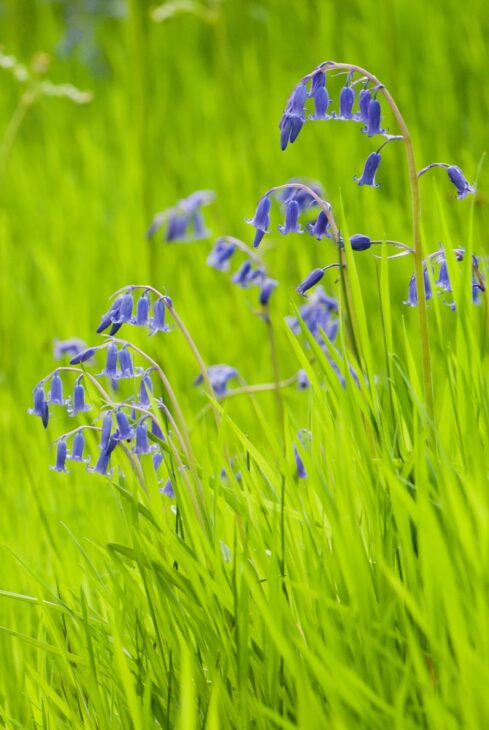Looking out for Bluebells
,

(c) Katrina Martin/2020 Vision
‘There is a silent eloquence
In every wild bluebell’ – Anne Brontë
As we begin to see the bluebell carpets rolling out, this quote certainly rings true. I want to take this time to highlight the importance of protecting these beautiful flowers.
Throughout the blog, I will be referring to the ‘common bluebell’ but that is not the only name by which it is known. The plant’s scientific name is Hyacinthoides non-scripta. Other popular names include English bluebell, Fairy Flowers, Goosey Gander, Adder Bells, and Cra’tae (Crowtoes). In Scotland, you may also find the Scottish bluebell, which is different from the common bluebell and can be referred to as a harebell.
Like any good origin story there is a rivalry – Common Bluebells versus Spanish Bluebells. Our native bluebells were first recorded by John Gerard in 1597 referring to them as ‘the blew hare-bells’. The invasive and non-native Spanish Bluebells were first recorded in the wild 312 years later in 1909. Their ventures into the wild are thought to have been caused by the careless disposal of bulbs and pollination. This Spanish variant is vigorous and if we imagine a ‘beat the boss’-esque fight scene between the two as they fight for land, resources, and of course honour, then the Spanish variety would succeed. However, this doesn’t mean our native bluebell cannot respawn.
We are in a unique position here in the UK as we are home to half the world’s population of common bluebells. Endangered and vulnerable, the plant is legally protected by the Wildlife and Countryside Act of 1981 and the acts Schedule 8 amendment in 1998. This means that, in the countryside, digging up the plant or bulb is illegal and prohibits landowners from removing and selling bluebells from their land. Breaking this law can lead to a hefty fine of up to £5,000 and/or six months imprisonment.
Finally, the common bluebell is highly sensitive and once damage is done to a bluebell (for example, being trampled) it can take five to seven years for a single bluebell to recover and re-seed, if it is able to. Stepping on bluebells destroys their ability to photosynthesise which causes them to die back, stop sending food into their bulbs and stops the production of new flowers and seeds.
We can help to protect our native bluebells by sticking to designated path routes when out in nature reserves because these paths have been created with the preservation of important wildlife and plants in mind. Cumbernauld Living Landscape run guided walks and events where we can responsibly appreciate the spectacle of bluebells in our green spaces. We have landowner permission and tightly control the number of attendees and the paths taken, therefore, minimising the damage done to the plants.
I hope you have learned some new facts from this blog and will appreciate, even more, the spectacular bluebell displays we have here in Cumbernauld Glen and Luggiebank the next time you’re out for a walk.
